All products featured are independently chosen by us. However, SoundGuys may receive a commission on orders placed through its retail links. See our ethics statement.

Sennheiser HD 620S review: the oddball of the HD 600 series
February 14, 2025
Sennheiser HD 620S
Closed-back headphones aren’t always the first choice of audiophiles, but Sennheiser is looking to make a splash in this under-served niche. So, how’d it do? Well, it’s complicated; I feel like these headphones fit more in the HD 5XX line of cans than they do the HD 6XX for a few reasons. Let’s take a listen.
- This review was published on TKTK.
The Sennheiser HD 620S is for anyone looking for the most comfortable headphones they can buy, need isolation (use these in a noisy environment) and aren't afraid of some equalization. The odd sound will put some off, but anyone who knows what they're doing should be able to address the worst flaws without too much trouble.
What’s it like to use the Sennheiser HD 620S?
The Sennheiser HD 620S is a set of closed-back wired headphones with a padded headband and removable cable. This product is aimed at audiophiles looking for a closed-back option for at-computer use, despite the general preference toward open-back designs among this segment.
The headphones themselves are quite Spartan, as wired headphones tend to be nowadays. With a completely matte black exterior and few eye-catching features, the Sennheiser HD 620S isn’t meant to be a set piece. However, it looks the part of “serious headphones” by virtue of the very large ear cups, deep pads, and large drivers. Nothing on these headphones feels cheap, as the material seems to be of high quality, and there aren’t the usual corners cut for sub-$300 headphones.
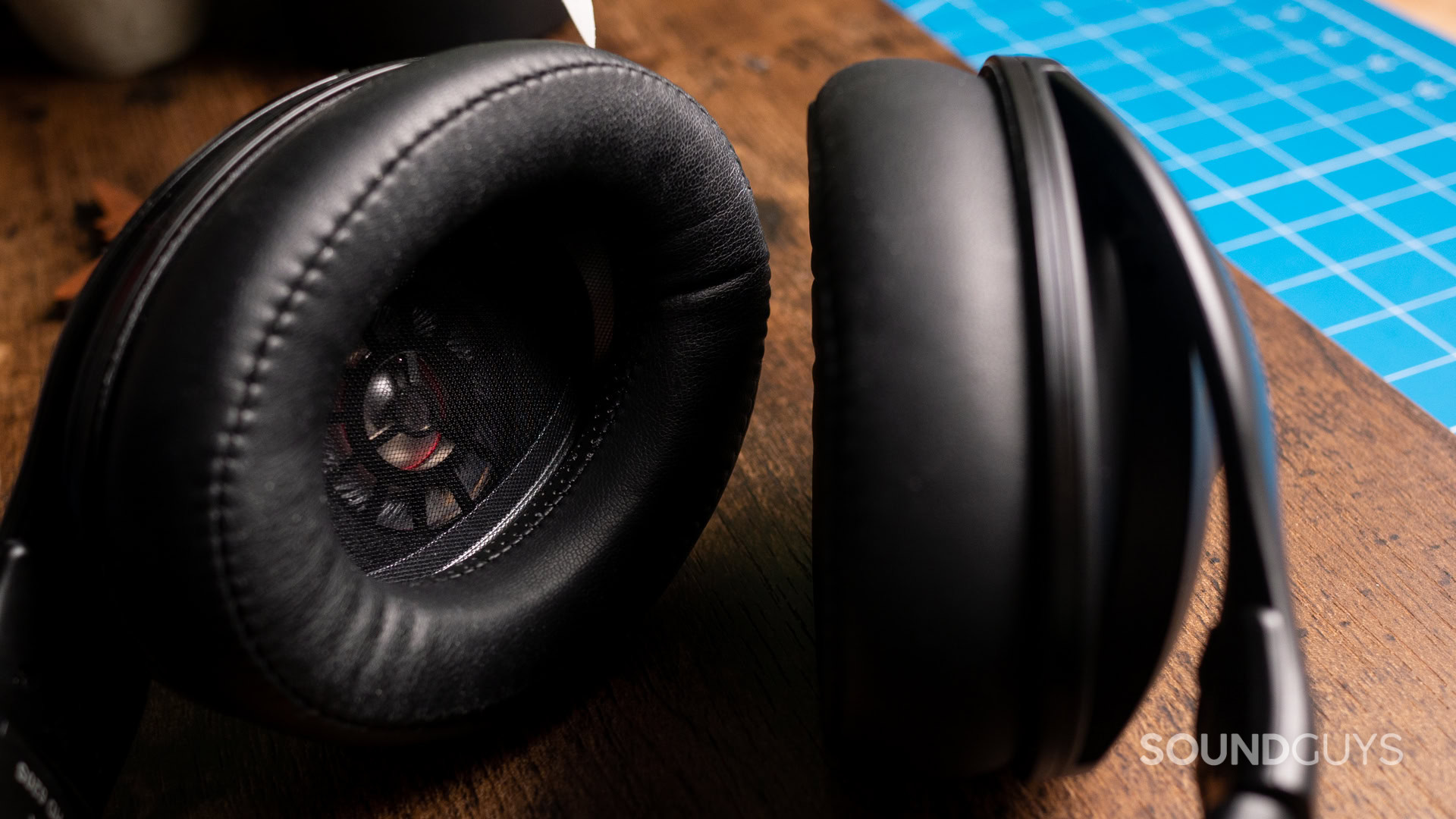
On the bottom of the right earcup is a locking 2.5mm female TRS jack meant to allow you to remove the cable at a moment’s notice for storage or replacement. Said cable is a 3m affair, with a 3.5mm termination that’s threaded for use with an included 6.3mm adapter for use with the larger jack on devices like USB interfaces, older entertainment centers, and the like.
Like the HD 5XX series headphones offered by Sennheiser, the Sennheiser HD 620S has a single-axis pivot on the single-sided yoke of the headphones. This point is in the back of the ear cups, so it’s quite easy to see which way is which. The ear cups have some play on the band, so if you do need these to angle forward a bit, that’s usually accommodated by the slack in the housing itself.
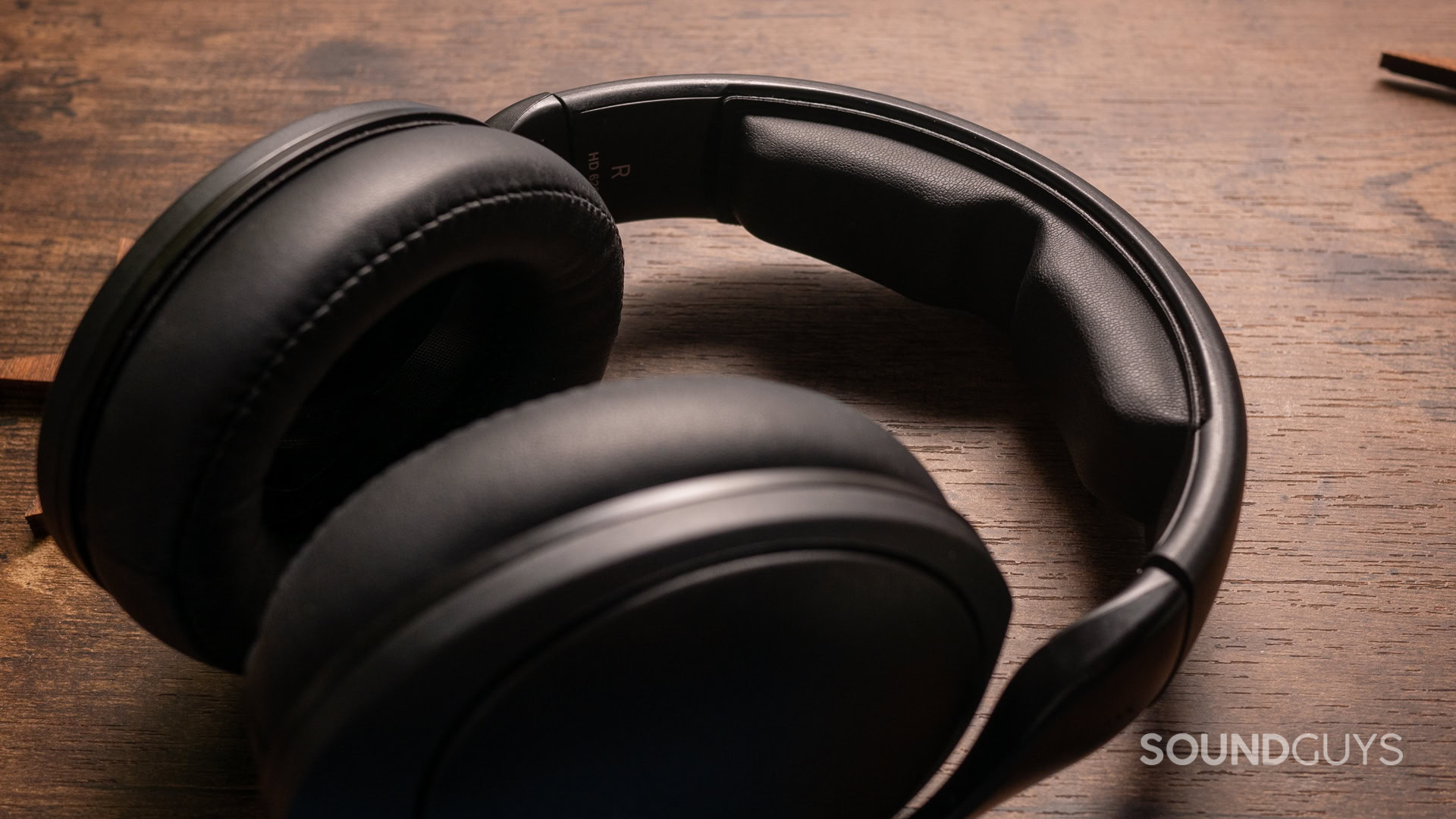
I found the headphones to be quite comfortable, though I can see why some advise you to “break in” these cans. For whatever reason, the tops of the ear cups don’t exactly move as much as you’d expect from this design, and that can lead to a wonky fit until the band relaxes or you loosen the band. Though you’ll never forget these are on your head, you shouldn’t find them uncomfortable unless you’re getting overheated from an hours-long listening session.
Once you’ve put the time in with these headphones, however, I found them to be among the most comfortable of the category they’re in — no small feat when they’re competing with Beyerdynamic, and Sony directly here. Well done, Sennheiser.
Nope. However, if you wish to equalize the headphones, it's never a bad idea to guarantee that you'll have the headroom necessary. Given the relatively manageable power requirements of the headphones (110dB/1 Vrms, 150Ω), even a cheap USB interface like the Scarlett 2i2 or a DAC/amp combo is enough to power these cans with more than enough juice.
How well does the Sennheiser HD 620S block out noise?
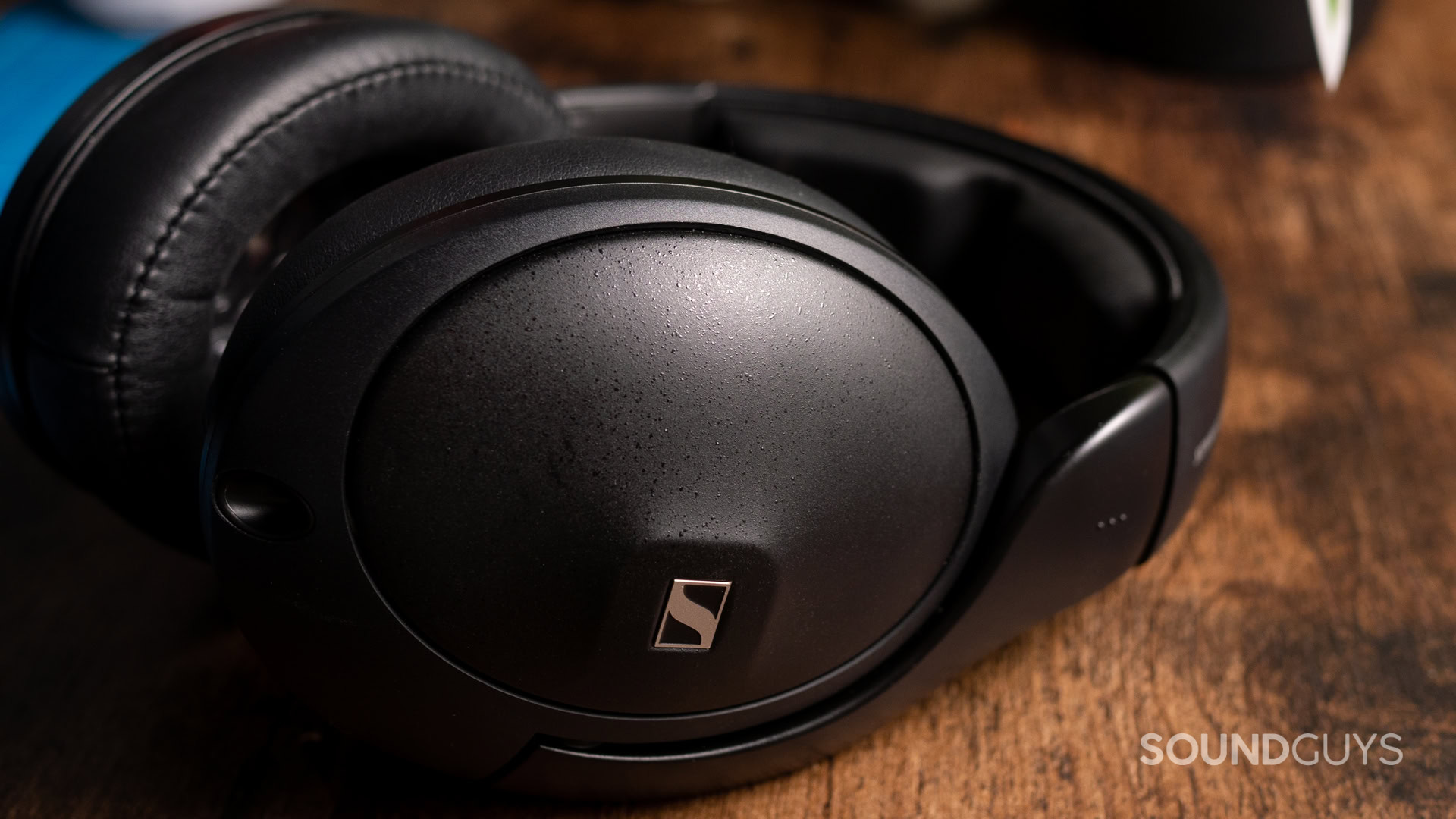
Like many other closed-back over-ear headphones, the Sennheiser HD 620S blocks out noise quite well. Isolating users from an average of 65% of outside noise, the Sennheiser HD 620S is extremely good at attenuating high-frequency noise. The headphones struggle to block out noise in the lowest octaves, but on the whole, the cans are great if you’re listening in a slightly noisy environment, like at home or in the office.
Loading chart ...
Even though I don’t see these headphones making all that many trips outdoors, it should be pointed out that engine noise and really loud vehicles will cut through whatever you’re playing with ease. Trust me when I tell you that these headphones are for the office your computer, and few other places.
How does the Sennheiser HD 620S sound?
Though the headphones’ price imply high performance, it’s not clear that most people will like these cans out of the box — but we’ll explain below.
Reviewer’s notes
Editor’s note: this review uses a hover-enabled glossary to describe sound quality based on a consensus vocabulary. You can read about it here.
Multi-Dimensional Audio Quality Scores (MDAQS)
The chart below shows how the sound of the Sennheiser HD 620S was assessed by the Multi-Dimensional Audio Quality Score (MDAQS) algorithm from HEAD acoustics.
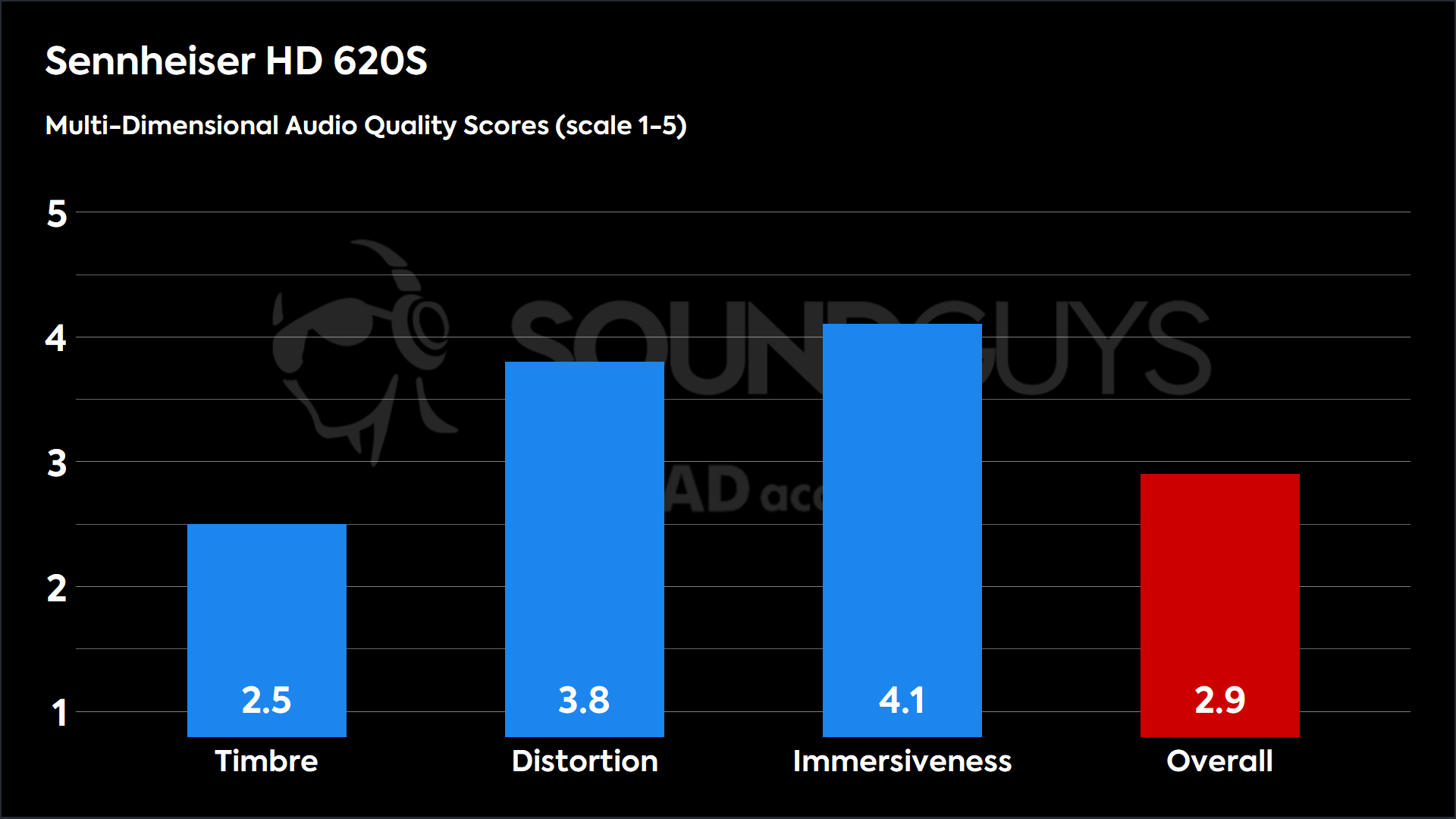
I don’t agree with these scores. Though I find the response quite weird in many ways, I don’t believe the overall mean opinion score (MOS) of 2.9 is quite fair, and I will be the first to tell you that many will find the sound of the Sennheiser HD 620S to be fine enough. Whether or not they’ll elect to spend over $300 on it is another matter. While the immersiveness and distortion scores seem correct to me, the timbre is a little on the harsh side. My impression of the headphones would have me putting it at about 4 flat, but I get the feeling that the somewhat weird response is perhaps too much for the Timbre score to overcome.
- Timbre (MOS-T) represents how faithfully the headphones reproduce the frequency spectrum and temporal resolution (timing information).
- Distortion (MOS-D) represents non-linearities and added noise: higher scores mean cleaner reproduction.
- Immersiveness (MOS-I) represents perceived source width and positioning: how well virtual sound sources are defined in three-dimensional space.
Then there’s the other complication of the dataset for MDAQS being built using the responses of untrained listeners, and it’s not clear that this group will rate things the same way as trained listeners. In previous studies, there has been some delta between these groups. So we often see a lot of audiophile headphones scoring fairly low here, even when there are people who like the sound very much. Just remember that these are mean opinion scores and not peak opinion scores. There are going to be people who like the sound of these headphones, especially when you consider that it’s the Timbre that brings down the overall as severely as it is — not the Distortion or Immersiveness scores. Fix that, and you’ve got yourself some decent cans.
Objective Measurements
While the Sennheiser HD 620S does sort of dance around our preference curve, the repeated skipping across it up and down means that it’s further from it than it may appear on a chart. Swings in response of up to +/- 6dB in ranges that are quite near each other mean that the sound is quite a ways off of what we would typically look for. It doesn’t sound bad, just different.
Loading chart ...
What isn’t shown here is that there are also some odd dropouts at 4kHz and 12.2kHz that are extremely narrow in Q. Though it’s unlikely that this will be a noticeable issue, it’s still something to note. Don’t try to EQ these away, as you’ll likely just make the task more difficult on yourself.
I went overboard on EQing these headphones, but I feel like the results I got with this were a marked improvement. Set your preamp to -3.1 and you should be good to apply the following as a starting point.
| Filter type | Frequency | Gain | Q |
|---|---|---|---|
| Filter type LS | Frequency 80 | Gain 7.5 | Q |
| Filter type LS | Frequency 238 | Gain -3.8 | Q |
| Filter type PK | Frequency 110 | Gain -2.8 | Q 3 |
| Filter type PK | Frequency 220 | Gain 4.7 | Q 2 |
| Filter type PK | Frequency 477 | Gain -3.8 | Q 1.6 |
| Filter type PK | Frequency 685 | Gain -2.3 | Q 3.154 |
| Filter type PK | Frequency 2828 | Gain -3.7 | Q 3.559 |
| Filter type PK | Frequency 3807 | Gain 2.7 | Q 7.268 |
| Filter type PK | Frequency 4288 | Gain -1.4 | Q 4.845 |
| Filter type PK | Frequency 6830 | Gain -2.7 | Q 4.995 |
| Filter type PK | Frequency 8202 | Gain -5.4 | Q 3.606 |
| Filter type PK | Frequency 12032 | Gain 3.9 | Q 5.975 |
With some involved EQ work, you can improve the sound of the Sennheiser HD 620S to get solidly decent results. I highly recommend using low-shelf filters to tame the bump in the bass, and some sort of cuts in the mids to make the response a bit more even. You might find that getting the bass and sub-bass in line after whacking down the mids a bit leaves the highs in a decent spot. Balancing the lows and the highs will go a long way, even if getting a little crazy with the peak filters could net you some improvements. I definitely went overboard on mine, but I was able to get a much more appropriate performance.
Can you use the Sennheiser HD 620S for phone calls?
The Sennheiser HD 620S does not have an in-line microphone, so unless you have an external mic: you’re out of luck for phone calls or streaming with your headphones only.
Should you buy the Sennheiser HD 620S?
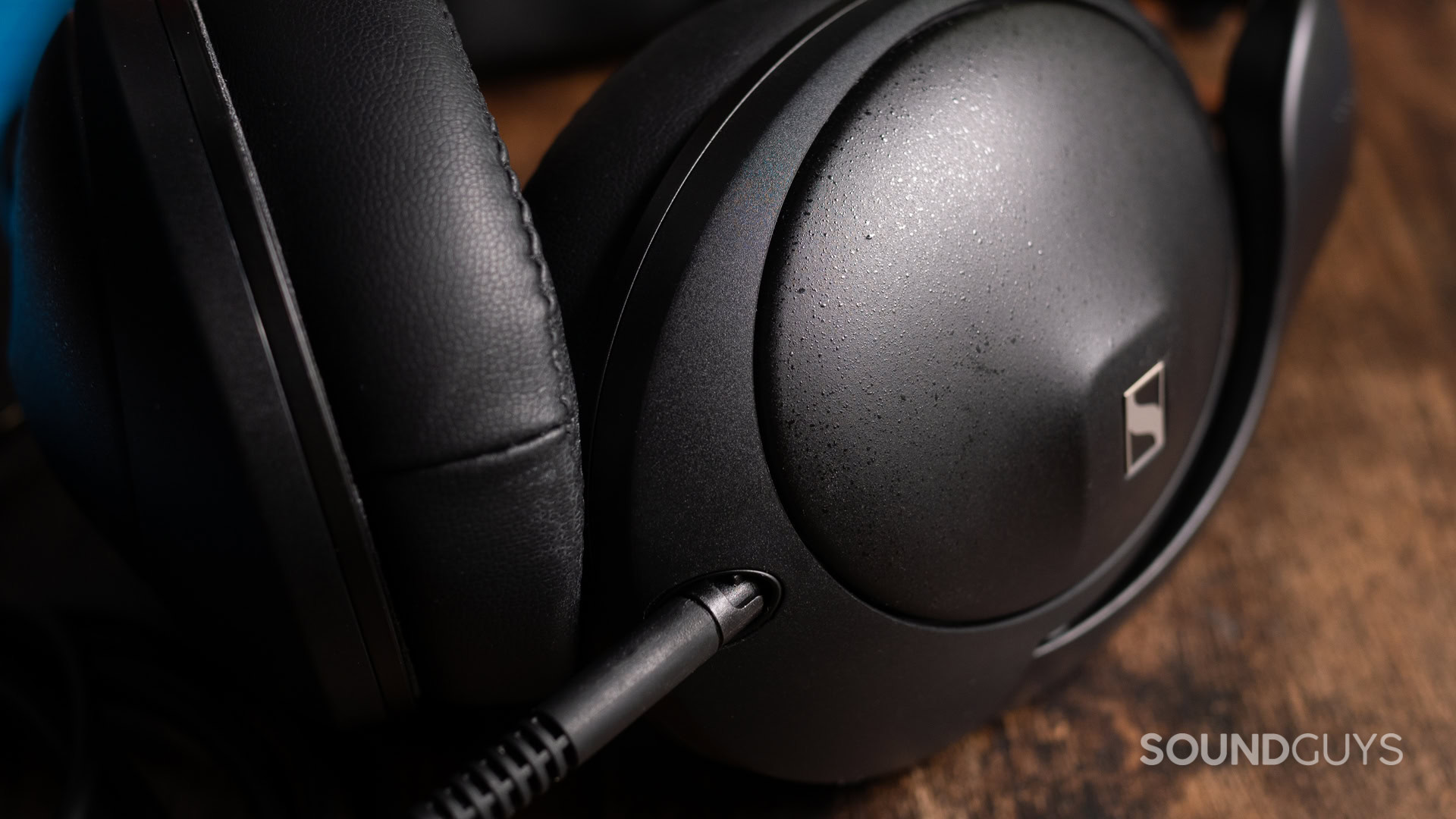
I like the Sennheiser HD 620S, but I don’t $350 like the product. It’s comfortable, durable, and does what’s asked of it — but it needs a bit of a heavy hand to deal with some odd tuning choices that may not be what you’re looking for. Objectively, it’s a decent set of headphones, but I know that I’m only going to recommend this to people who truly can’t use a set of open-back headphones at the computer. For example, streamers who don’t want their audio to get picked up by their mics, audiophiles willing to EQ the crap out of their headphones, and casual listeners who value comfort above all else.
In that light, you may want to do a bit of poking around to see if there’s anything else out there that can work for your personal needs better than the Sennheiser HD 620S. Though I don’t agree with the MDAQS on this one, the sound is undeniably a bit odd compared to what you might expect right out of the box.
What should you get instead of the Sennheiser HD 620S?
The toughest part of this review is taking a look around at the competitors to the Sennheiser HD 620S and trying to find a clear upgrade — and there isn’t any. Pretty much all of the other models out there in the $200-$300 price bracket for closed-back audiophile headphones have some significant tradeoffs that may give you some hesitation.
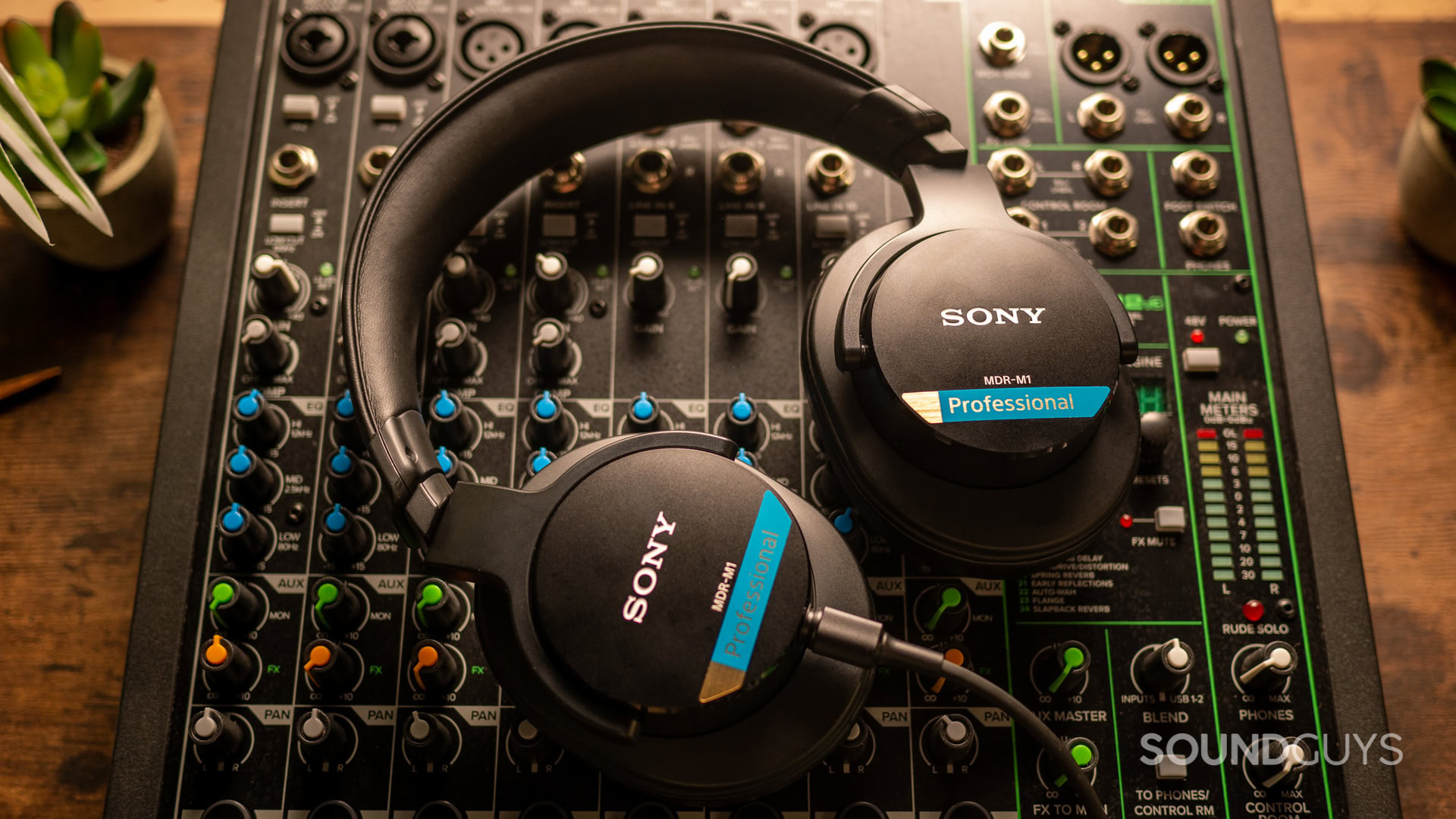
Mainly, you’re going to be looking at studio options like the Beyerdynamic DT 700 X ($269 at Amazon), Beyerdynamic DT 770 ($169 at Amazon), FiiO FT1, or Meze Audio 99 Classics ($309 at Amazon). However, none of these are as comfortable as the Sennheiser HD 620S, and all of them require some equalizing to sound their best. The Beyerdynamics in particular, have a very prominent treble spike that a lot of users really hate, and might startle you if you’re not looking for it.
If you find that your headphones routinely have too much in the high end, you might have an outside chance of liking the Sony MDR-M1 ($249.99 at Amazon). Though its “ear gain” hump is a little muted and it doesn’t take all that well to equalization in some spots, I would pick this set of headphones as the most credible competitor to the Sennheiser HD 620S.
Sennheiser HD 620S review: FAQs
No. The Sennheiser HD 620S has no ingress protection rating.
Yes, but you will need to buy a Sennheiser-branded replacement, as the locking mechanism in the 2.5mm end will need to fit the headphones specifically.
Not moreso than other competing options, but they're fine for the task provided you have an external microphone.
No.
No.
Thank you for being part of our community. Read our Comment Policy before posting.
